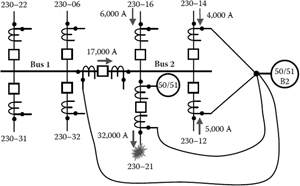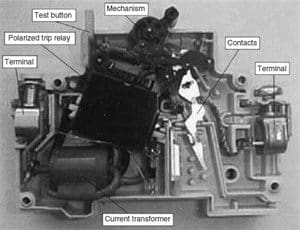Complete overview of lightning arresters (part 2)
Continued from article Complete overview of lightning arresters (part 1) Surge arresters are devices that help prevent damage to apparatus due to high voltages. The arrester provides a low-impedance path to ground for the current from a lightning strike or… Read more
Sep 29, 2011 | By Jignesh Parmar

Complete overview of lightning arresters (1)
Lightning can create voltage surges in several of the following ways. Lightning can score a direct hit on your house. It can strike the overhead power line which enters your house, or a main power line that is blocks away… Read more
Sep 23, 2011 | By Jignesh Parmar

Animal deterrents and security in substation
The vast majority of electrical utility substations designed to transform transmission voltages to distribution class voltages employ an open-air design. The configurations may vary, but usually consist of equipment that utilizes polymer or porcelain insulators or bushings to create electrically… Read more
Sep 05, 2011 | By Edvard Csanyi

Bus protection – Overcurrent differential
When selecting relays for bus protection, a major concern is the ability of the protective relaying scheme to restrain from tripping for close-in line faults. Tripping for bus faults, the reason for installing bus differential relaying, is less of a… Read more
Aug 31, 2011 | By Edvard Csanyi

Surge arrester types and auxiliary equipment
Nearly 100 years ago, electrode gaps (rod, sphere, or pipe) were used to limit overvoltages on equipment (Sakshaug, 1991). Some of these systems, particularly pipe gaps, may still be in service today. However, the characteristic of gap sparkover voltage vs…. Read more
Aug 25, 2011 | By Edvard Csanyi

Capacitor protection by surge arresters – ABB
Generally speaking, capacitor protection by surge arresters has been a difficult task before ZnO arresters became available. The high discharge currents and possible energies associated with an arrester operation at a capacitor bank heavily stressed the spark gaps in a… Read more
Aug 22, 2011 | By Edvard Csanyi

Applications and forms of differential relays
Differential relays take a variety of forms, depending on the equipment they protect. The definition of such a relay is “one that operates when the vector difference of two or more similar electrical quantities exceeds a predetermined amount. It will… Read more
Aug 15, 2011 | By Edvard Csanyi

Whole-House Protection Strategy
No single SPD (Surge Protection Strategy) can protect all the equipment in a residence from all causes of electrical surges. Instead, a whole-house protection strategy, consisting of point-of-entry and point-of-use SPDs, is necessary to help guard against disturbances from inside… Read more
Aug 13, 2011 | By Edvard Csanyi

How residual current device (RCD) works?
The residual current device (rcd) is used to detect earth fault currents and to interrupt supply if an earth current flows. The main application is to prevent electrocution but RCDs can also be used to protect equipment, especially against fire…. Read more
Jun 11, 2011 | By Edvard Csanyi

MiCOM P139 – Feeder Management and Bay Control
MiCOM P139 is a cost-effective one-box solution for integrated numerical time-overcurrent protection and control. The unit’s protection functions provide selective short-circuit protection, ground fault protection and overload protection in medium- and high voltage systems. The systems can be operated as… Read more
Mar 30, 2011 | By Edvard Csanyi

History of the development of busbar protection
Up to the mid 1930’s, no widescale efforts had been made to protect busbars on a unit basis. Also there was reluctance in arranging one protective equipment to cause simultaneous tripping of a large number of circuits. Before the British… Read more
Mar 02, 2011 | By Edvard Csanyi

Protection Relay – ANSI Standards
In the design of electrical power systems, the ANSI Standard Device Numbers denote what features a protective device supports (such as a relay or circuit breaker). These types of devices protect electrical systems and components from damage when an unwanted… Read more
Feb 22, 2011 | By Edvard Csanyi

Distance Relays
Distance relays respond to the voltage and current, i.e., the impedance, at the relay location. The impedance per mile is fairly constant so these relays respond to the distance between the relay location and the fault location. As the power… Read more
Nov 12, 2010 | By Edvard Csanyi


